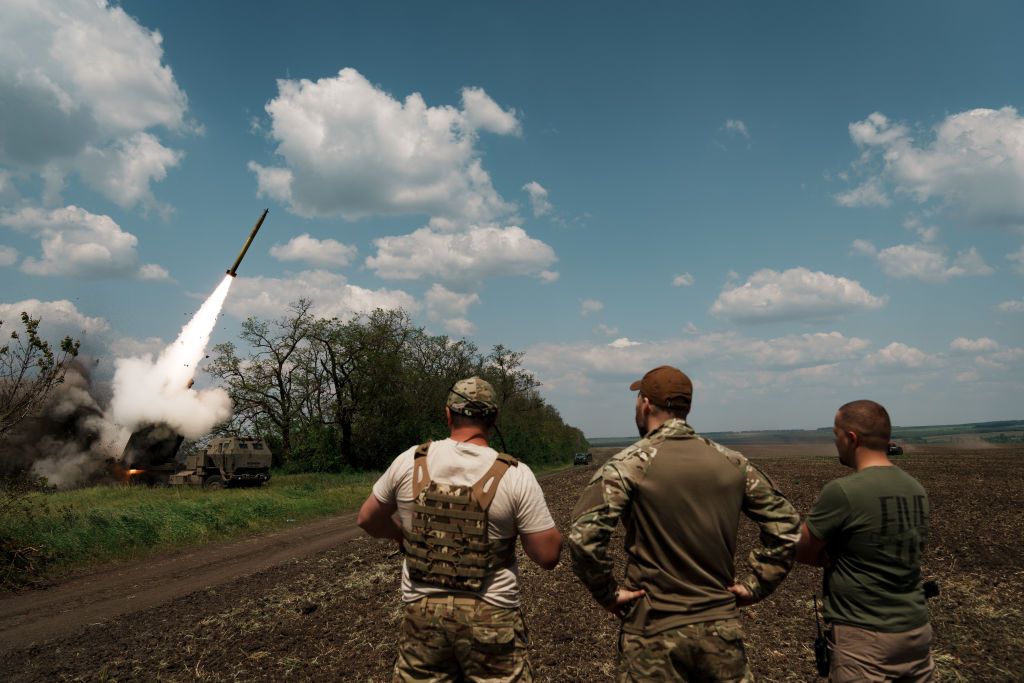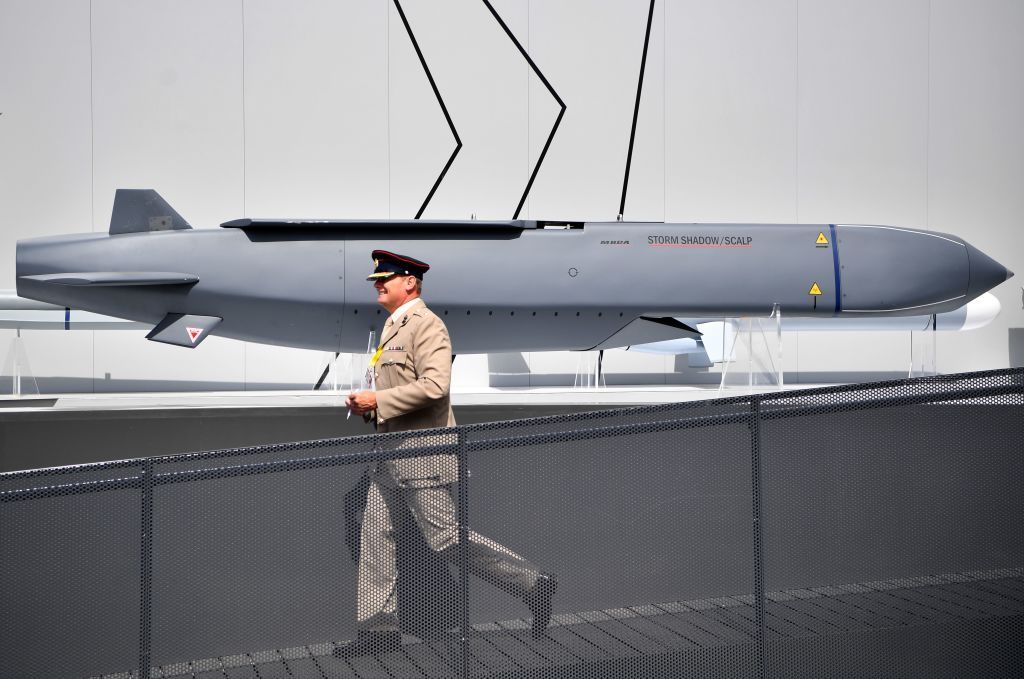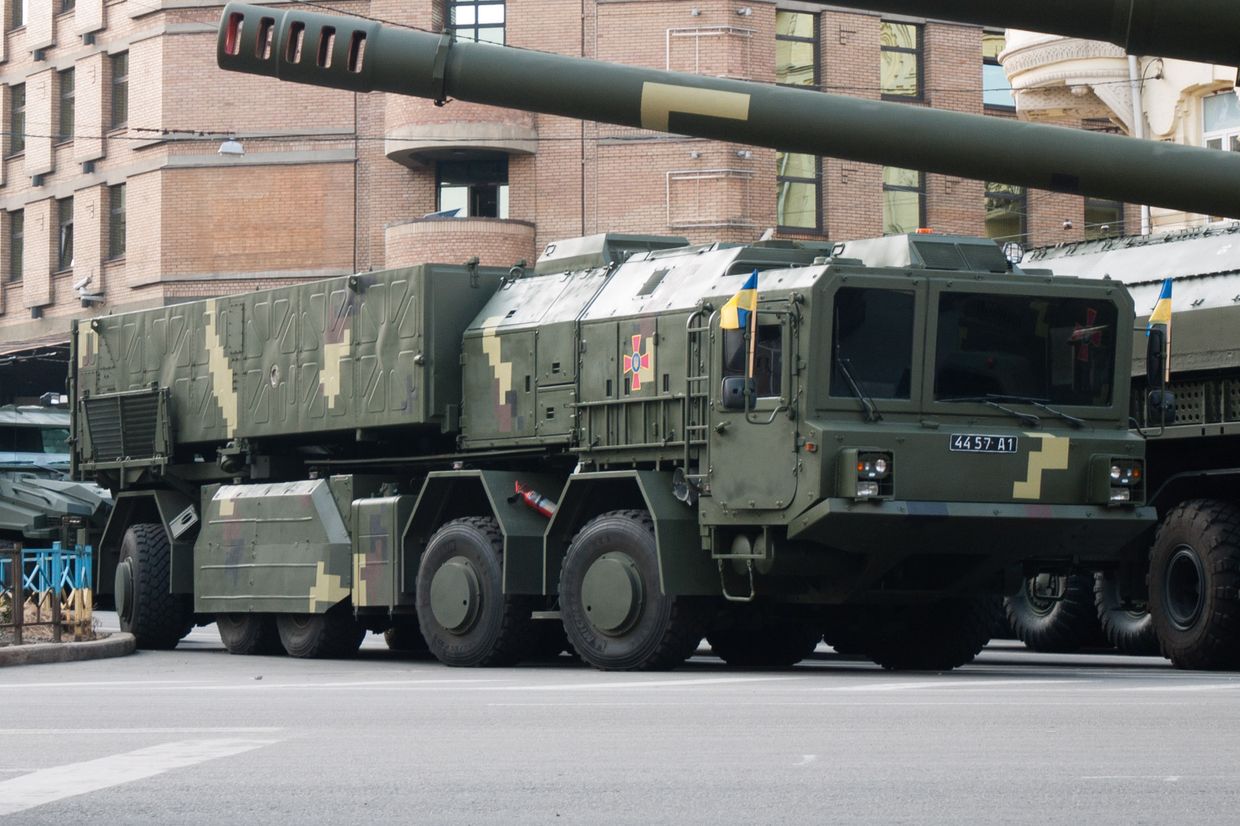Striking Russian pressure points deep behind enemy lines has become a near-daily task for Ukraine — and the country’s long-range arsenal continues to grow to serve the purpose.
Ukraine’s latest acquisition, the Ground-Launched Small Diameter Bomb, is due for its combat debut any day now.
The GLSDB is the brainchild of Boeing and Saab. As its name suggests, it is an attempt to combine the versatility of a ground launcher with the cost-efficiency and precision of a small guided bomb.
The warhead is modest, with less than 20 kilograms of explosives. But its 150-kilometer range, high evasiveness, cheap cost, and ability to strike from multiple angles can be harnessed to harass high-value targets in the enemy’s rear, without using up expensive Western missiles.
Politico reported that the first batch of the new weapons was supposed to arrive in Ukraine as early as Jan. 31, although the military has yet to confirm.
The U.S. first pledged to provide GLSDBs to Ukraine in February 2023. Following the Politico report, Pentagon Press Secretary Pat Ryder confirmed the upcoming delivery but declined to comment on the timeline due to “operational security reasons.”
What is GLSDB?
The GLSDB is technically a new weapon that began mass production in 2023. But no part of it is actually new. It’s a precision-guided 250-pound aircraft bomb attached to an M26 rocket; both have been separately used for decades.
Ukraine will be the first to use their combined form in combat. On launch, the motor accelerates the munition and falls off. The wings then unfold, and the SDB glides to its target. Its GPS-aided inertial navigation system is claimed to be precise within one meter.
It can be launched from platforms Ukraine already has, like the HIMARS (High Mobility Artillery Rocket System) and M270 multiple-launch rocket system, or from its own launcher disguised as a shipping container.

The specifications and design hint at the weapon’s background, partially as an attempted solution to the U.S. military’s stockpiles of unused M26 rockets during the so-called War on Terror while creating an affordable way to sell guided bombs to countries without an air force.
How powerful is GLSDB?
The GBU-39 Small Diameter Bombs used in the weapon were designed to take out enemy insurgent or terror cells with their high accuracy and limit collateral damage with their reduced explosive power, Fabian Hoffmann, Doctoral Research Fellow at the University of Oslo, who specializes in missile technology, told the Kyiv Independent.
The limited blast radius is less useful for Ukrainians, but other aspects of the weapon can give it new life in their hands.
The cheapness and commonality of parts is one advantage. According to Hoffman, the bomb itself is worth around $40,000, and attaching a rocket wouldn’t bring the price up very significantly.
Right now, all Ukraine has that can hit that far are the 165-kilometer ATACMS (Army Tactical Missile System) and the 250-kilometer air-launched Storm Shadow/SCALP missiles. Because they cost around $1 million and $2.5 million, respectively, Ukraine has to save them for only top priority targets.

Allies use these weapons and have to leave a certain amount for themselves, which was likely the reason why Kyiv has so far received a relatively small number of these missiles.
According to Reuters, France has provided around 50 SCALP missiles to Ukraine, while the U.K. hasn’t disclosed the number of missiles they sent. The New York Times reported on Oct. 19 that the U.S. had delivered to Ukraine 20 ATACMS missiles, with Kyiv saying it was just one of the first batches.
While slow for a long-range assassin, the GLSDB makes up for it with its maneuverability in the air. It can be programmed to approach the target from a variety of angles and any direction, theoretically allowing it to negate many forms of cover, Kelly Grieco, a senior fellow at the U.S.-based think tank Stimson Center, told the Kyiv Independent.
The manufacturer claims that the GLSDB also has an advanced anti-jamming system that will counteract Russia’s expected electronic countermeasures. ECMs can be expected, as Russia has used them against other Ukrainian guided rockets, according to John Hardie, deputy director of the Russia Program at the Foundation for Defense of Democracies.
Russia’s military doesn’t have anything exactly like the GLSDB in its arsenal and uses the Iskander-M system or guided missiles fired by the Tornado-S MLRS for ground-launched precise strikes at a similar range, Hardie told the Kyiv Independent.
The tactical possibilities of the GLSDB are also analogous to how Russia uses Iranian-designed Shahed drones as cheap, small, long-range, maneuverable replacements for its expensive missiles like the Iskander or Kindzhal. Shaheds also use cheap, easily available parts, can maintain a low profile, and strike from any angle with a modest warhead, though they are easy to take down.

What can Ukraine target with GLSDB?
The GLSDB is best suited for attacking soft targets, such as arms depots, barracks, logistics nodes, temporary bases — basically anything that’s not heavily protected, experts said. The goal would be to inflict costly losses and force Russian troops to move their supply lines farther from the front.
Because the bomb is flexible and quickly deployed, Ukrainian forces can effectively use them to hit time-sensitive targets, like high-ranking officers during their base visits, according to Hoffman.
But whether or not the GLSDB makes a big difference greatly depends on the number of bombs Ukraine will receive from the U.S., which is currently unclear.
“I think Ukraine will need to receive hundreds this year to realize the GLSDB’s full potential, and I expect that will happen. Initial deliveries may be small, perhaps measured in the tens, but I expect production will ramp up as the year goes on,” said Hardie.

The GLSDB will complement Ukraine’s capabilities amid the constant need to replenish its missile and artillery stocks depleted by intense fighting.
“It creates more flexibility on the side of Ukraine, and that is really good because, as a decision-maker, you want to have options. This just gives you another thing you can use,” Hoffmann said.
“This is also something that Russia now has to take into account, and it will complicate their planning.”

Note from the author:
Hi, this is Dinara Khalilova, the author of this article. I hope it brought you more clarity on the new long-range weapons pledged by the U.S. and why Ukraine needs them. To continue reporting on the most important developments of the war, we need your support. Please consider becoming a member of the Kyiv Independent community.














